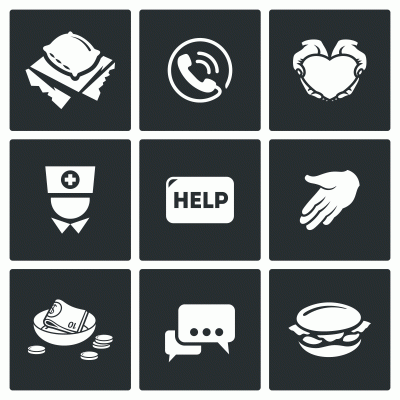If you work in a public library, you know many users are experiencing homelessness. You may wonder how to best serve this population and if it’s even the library’s responsibility to get involved. The directors of the Denver, Dallas and Salt Lake City public libraries answer that question with a resounding “yes,” assuring us there is much to be done.

Speaking at ALA’s 2015 Annual Conference in San Francisco, these library leaders started by explaining that homelessness is experienced, not something people are —a temporary state of being rather than a definitive condition. Libraries can play an essential role in providing support and relief for people in the midst of that transition. It is important for libraries to use respectful terminology; presenters said “users experiencing homelessness” instead of “homeless users” or “the homeless.”
I was drawn to the presentation “They’re Our Customers, Too: Engaging the Homeless at Your Library” because of my belief that public libraries play a fundamental and transformative role in their communities. As an employee of the Denver Public Library, I was proud to see my library system represented as a leader in working with users experiencing homelessness. The session demonstrated innovative strategies for engaging users who are experiencing homelessness, while simultaneously focusing on how they need to be treated with respect and humanity rather than as a problem that needs to be combated.
As Dallas Public Library Director Jo Giudice noted, the problem is not with the community itself, but with the implementation of services and perception. There is always the risk that users experiencing homelessness will be stigmatized by other users or library staff. The central challenge of implementing services is that not enough is being done to support this population’s special needs, although they represent a significant portion of library users across the nation.
Equity of access
Many librarians agree that people experiencing homelessness should be treated no differently than any other customer. John Spears, executive director of the Salt Lake City Public Library, defends his programming focused on unsheltered users with excellent logic: it’s no different from what libraries would do for any constituency. Part of equity of access is removing barriers, which is what the Denver Public Library intends to do with the help of their recently hired community resource specialist, Elissa Hardy.
Since February 2015, Hardy has been working to connect at-risk users with resources and social services, make the library a safe and accessible place for everyone, and to provide trauma-informed training for staff. Hiring a social worker was not without challenge; as City Librarian Michelle Jeske noted, Hardy was hired for a two-year limited position as approved by city administrators. Yet Hardy is in high demand, so hopefully her position will be made into a permanent one. The success of inviting social workers to join library staff can be seen in public libraries in San Francisco, Dallas, Denver and Edmonton, Alberta, Canada. Perhaps in the future more libraries will be inspired to include social work professionals in their services.
Starting conversations
One of the key points of “They’re Our Customers, Too: Engaging the Homeless at Your Library” was that libraries need to get to know and understand their homeless populations in order to better serve them. The Denver Public Library’s move to hire a social worker was prompted by staff. The process began in 2012 when staff member Hillary Estner formed a Homeless Services Action Committee. The committee works to establish best practices for helping those in need and hosted discussion forums for staff and library partners on homelessness. Since staff members spend lots of time interacting with users and learning about their needs, staff referrals have become the main source of Hardy’s heavy workload.
The Dallas Public Library took advantage of the crucial time before the library opens its doors each morning, when many people are lined up at the door waiting to get in. They utilized the “Walmart method” of meeting and greeting users at the door. They also set up a low-cost, ongoing program called Coffee & Conversation, the goal of which is to get staff to interact with users experiencing homelessness. After developing personal relationships with the customers, they conducted a survey to determine what services were of greatest need. The survey was incentivized with a one-day bus pass. The results indicated the needs of the community, but also broke down assumptions. Prior to the survey, administrators believed GED classes would be of great benefit to those experiencing homelessness, but ended up determining that 80 percent actually had at least high school degrees, and many also had college degrees.
The library is a safe, warm, dry place where all people can find support, learn, connect and engage. But some users stigmatize and even fear the presence of users experiencing homelessness in the building. To accommodate all library users, the Salt Lake City Public Library rearranged the physical space of the building by dispersing computers throughout the library rather than concentrating them on the first floor, which worked to better integrate users experiencing homelessness into the library as a whole. The Denver Public Library also intends to decrease its security incidences by directly addressing mental health issues and substance abuse problems with the help of their new social worker. By training staff and connecting users to resources, the library is not just helping individuals, but its community at large.
Partnerships
Partnerships are invaluable to any library. By becoming a conduit for people experiencing homelessness, the library is responsible for directing them to where they can get the most help. Giudice emphasized that, at its core, the library is a place for information, but providing information includes directing users to social service providers. The Denver Public Library works on bringing the providers and services to the library by collaborating with the Colorado Coalition for the Homeless, Veteran Administration and other groups. Hardy uses a recognized measurement tool called VI-SPDAT to determine a user’s vulnerability. Once vulnerability is determined, high-risk users are placed on a list for service providers, who then monitor the list. Service providers reach out to high-risk users and provide them with the health care, support and shelter when they need it the most.
The Dallas Public Library has an in-house HELP (Homeless Engagement and Leadership Program) desk, which is staffed 40 hours a week by AmeriCorps volunteers who link users to social service providers. Similarly, the Salt Lake City Public Library partners with Volunteers of America, which dedicates 120 hours of monthly service to outreach and in-house engagement teams. The Salt Lake City Public Library also has significant relationships with a shelter, a clinic, an adult detox center and a homeless youth resource center. Employees are required to tour these facilities in order to understand what it’s like to experience homelessness. Spears also noted that social service partnerships can come in many forms and may not be directly related to homelessness, but likely serve a significant homeless population (e.g. a clinic or LGBTQ organizations).
Programming, services and special events
Along with the Coffee & Conversation program, the Dallas Public Library facilitated the creation of The Streetview Podcast. Host Rashad Dickerson, a customer experiencing homelessness, interviews guests and discusses a variety of topics. Their survey also indicated that customers experiencing homelessness want to be busy in the library, especially with creative activities, so the Dallas Public Library implemented keyboard classes, urban photography and the Love Project, a citywide art exhibit.
The Salt Lake City Public Library uses street engagement and library engagement teams to bring services to the unsheltered on the streets, in parks and around the city, as well as in the library itself. They also host Project Uplift, an all-day event that provides breakfast, lunch, swag, haircuts, pictures, movies and prize drawings.
By engaging customers experiencing homelessness in a variety of ways, libraries across the country are fulfilling their mission of making the library a safe, accessible place where meaningful and transformative change is possible in the lives of individuals and their communities. A great thanks to those libraries already doing this important work and many encouragements to those who’d like to start!
Further Reading
Dallas Public Library
Homeless Engagement Initiative description on Urban Libraries Counsel
Homeless Engagement Initiative YouTube Video
Streetview Podcast
“What is the library doing to address issues of homelessness?” on Booked Solid Blog
Denver Public Library
PBS Newshour on libraries and homelessness
Denver Public Library’s new social worker coverage in The Denver Post
Social work and libraries coverage in The New Social Worker
Washington D.C. Public Library adds a social work to staff in Washington Post
Salt Lake City Public Library
Project Uplift article in Desert News
Project Uplife article in KSL
Project Uplift description on Urban Libraries Counsel
Salt Lake City Public Library System website



